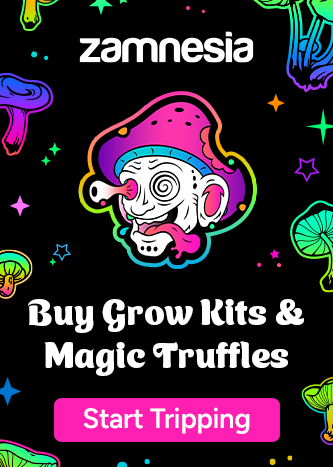What are cannabis trichomes and why are they important?
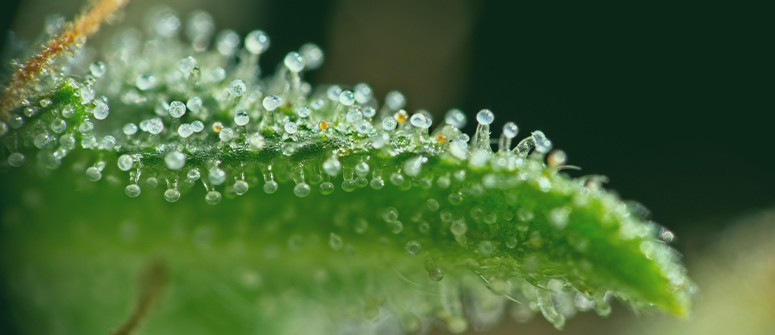
Cannabis trichomes are where all the magic happens. Whether you like to smoke weed with lots of THC, plenty of CBD, or an abundance of aromatic terpenes, trichomes are responsible for producing all of these precious phytochemicals, and many others. Find out all about cannabis trichomes here!
Contents:
- What are cannabis trichomes?
- Why are cannabis trichomes important?
- What should cannabis trichomes look like at harvest?
- How to check your cannabis trichomes
- What happens to trichomes after harvest?
- Separating trichomes from cannabis
- How to boost trichome production
- Cannabis trichomes: Vital structures
The glistening, fat flowers often get the credit for being the most desirable part of the cannabis plant. But if we’re being specific, it’s actually the trichomes on the flowers that are what people are really after—the rest of the cannabis flower has no psychotropic effects.
So, if you want to understand more about how cannabis plants exhibit their effects on the body, then learning about trichomes is crucial. And that’s exactly what this article is for. Keep reading to find out all about cannabis trichomes.
What are cannabis trichomes?
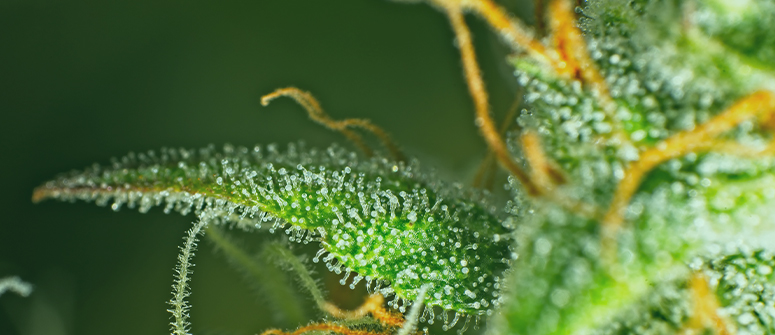
Trichomes are glands that grow (predominantly) on the flowers and sugar leaves of cannabis plants, and are where cannabinoids and terpenes are produced. These glands produce a viscous resin and coat parts of a cannabis plant during the late flowering stage. Whether you want THC, CBD, or some lesser-known cannabinoid, the trichomes are where you’ll find them!
There are three different types of trichome found on the cannabis plant:
- Bulbous trichomes
- Capitate-sessile trichomes
- Capitate-stalked trichomes
For those who grow cannabis for its psychotropic effects, it is the capitate-stalked trichomes that are of interest, as it is these that produce cannabinoids. These trichomes, at close (microscopic) inspection, resemble transparent little mushrooms covering the surface of cannabis buds and sugar leaves (the small leaves surrounding the buds).
At about 150–200µm tall, they’re incredibly small and, to the naked eye, appear as fine, shiny hairs; through a microscope, they appear as thin stalks that lead to a more bulbous head. In fact, the word trichome comes from the ancient Greek “tríchōma”, meaning “hair”. But they are nothing of the sort. As the plant matures, trichomes turn from clear, to milky white, to amber. By keeping an eye on their changing appearance, growers are able to ascertain when best to harvest cannabis.
When will trichomes appear on cannabis plants?
It differs a little, but a safe bet is around 3–4 weeks into the flowering stage. At this point, buds will be fairly developed and will begin to develop trichomes. In cannabis cultivars with longer flowering times, the trichomes might take longer to appear. But if buds are forming and the plant appears healthy, don’t stress if you don’t see trichomes appearing. If the plant develops healthily, it will start developing trichomes when it’s ready.
Why are cannabis trichomes important?
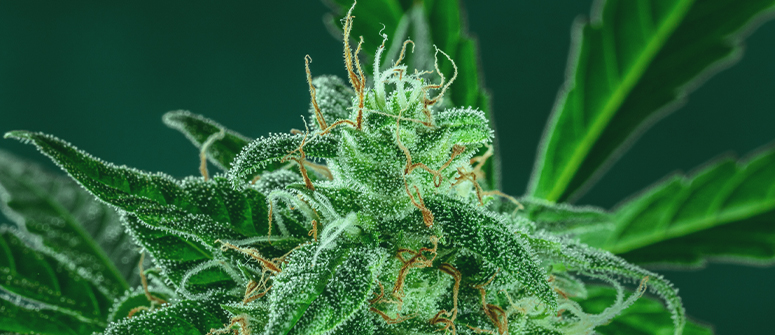
You may at this point be wondering why cannabis produces trichomes in the first place. Why would a plant go to all of this hassle to produce something that gets people high? What are the benefits of trichomes for cannabis plants themselves?
In plants, trichomes have actually developed over millions of years to serve a range of purposes.
For the cannabis plant
Different types of trichomes serve different purposes on the cannabis plant, but all come together to, unsurprisingly, keep a plant alive and healthy.
One purpose of trichomes is to act as a defence mechanism against the external environment. Dense clusters of shiny, resinous glands help to reflect UV light and protect the plant from extreme light exposure. Moreover, these closely packed growths disrupt the flow of air as wind passes over the plant, and help to prevent excess transpiration, meaning the plant will lose water more slowly. In dry areas, this adaptation can be life saving.
Furthermore, the terpenes within trichomes, as well as the texture of trichomes themselves, can serve to deter predators. With the intense smells being unpleasant to some, and the hairy, sticky texture irritating the mouths of others, trichomes have various tricks to help them ward off hungry pests.
But there’s too much going on inside the glandular trichomes of cannabis plants to be explained purely in terms of deterrence, especially as the plant is already mature by the time trichomes first appear!
For cannabis plants, glandular trichomes may also serve to produce and secrete metabolites that the plants need to survive. These metabolites include:
- Terpenoids: contribute to growth and development
- Phenylpropanoids: act as secondary metabolites and respond to stress
- Flavonoids: create antioxidants that help plants manage stress
- Acylsugars: exhibit insecticidal characteristics
For the grower
For growers and cannabis users, trichomes are the single most important part of the cannabis plant. If you consume trichomes by themselves, you can imbibe all the delights and benefits of the cannabis plant. If you consume cannabis plants devoid of trichomes, you might be consuming some greenery, but you certainly won’t get high! Whether you want intense highs, soothing effects courtesy of CBD, or delicious, rich flavours, trichomes are responsible for all of these!
Cannabinoids and terpenes
Cannabinoids and terpenes are produced in the trichomes, and only in the trichomes. Remove these structures from the equation, and you have nothing to give cannabis its effects or flavours—it would be no different to smoking some random, inert plant matter.
Cannabinoids interact with the body’s endocannabinoid system and exert a wide array of (mostly poorly understood) effects. Though their mechanisms of action are diverse and sometimes unknown, they tend to work by either interfacing directly with CB receptors, or influencing the production/breakdown of the body’s own endocannabinoids. The cannabis plant produces well over 100 cannabinoids, and it’s thought that all can affect the human body in some way.
The two most famous cannabinoids are THC and CBD. The vast majority of others will not cause any sort of high, but this doesn’t mean they don’t have potential benefits.
Terpenes give cannabis most of its scents and flavours, but also affect the high. While terpenes can’t get a person high on their own, they can interact with cannabinoids in the body to change the way that the latter affect a person, sometimes with significant effects.
Trichomes tell growers when to harvest
As trichomes are what most growers are after, it makes sense that they are also the best signal by which you should judge when to harvest your weed. THC is at its highest concentration when trichomes are milky white in hue. Therefore, most growers opt to harvest their weed when around 70% of trichomes have become milky white.
As trichomes mature at slightly different rates, finding over 70% milky trichomes is unlikely, so you’ll have to accept that some will be amber, and others will still be clear.
What should cannabis trichomes look like at harvest?
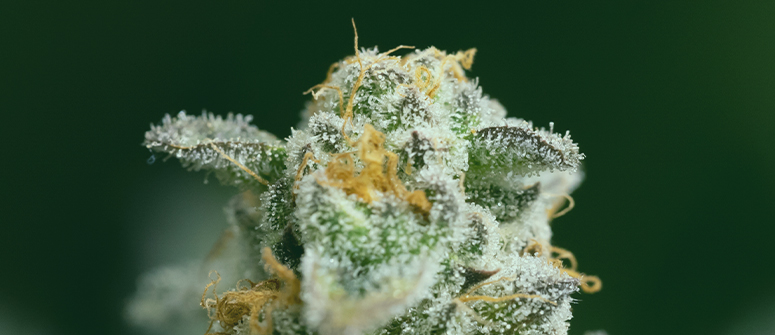
But what do these different colours indicate?
When immature, trichomes are clear. At first, all of the trichomes on a flowering plant will be clear, and will stay this way for some time. As the buds develop and become larger, and the plant approaches the end of its life, then the trichomes will start to mature and change.
From clear, trichomes will turn milky white. As mentioned, it is at this point that they contain the highest concentrations of THC, and are thus at their most desirable state (for most people). A plant harvested with mostly milky trichomes and few amber trichomes will have more energetic, cerebral effects.
Finally, after becoming milky, trichomes will turn amber. At this stage, the THC begins to degrade into CBN, which is thought to have more lethargic effects. If a cannabis plant with a large amount of amber trichomes is harvested and consumed, the effects will be heavier, producing a strong stoned feeling.
How long after trichomes appear can I harvest?
Counting down the days to harvest, and assuming the trichomes will be ready in time, is not a good way to pick a harvest date. Flowering periods advertised by seed banks are rough approximations and cannot tell you exactly when a plant will be properly mature. Some plants mature very quickly, while others take longer to develop.
Given this, you shouldn’t assume you’ll harvest plants in x amount of weeks after they begin flowering. Instead, you should begin to check the trichomes during flowering and take your cues from them, harvesting when the plant tells you it's ready—not when the packaging indicates.
How fast can trichomes change in colour?
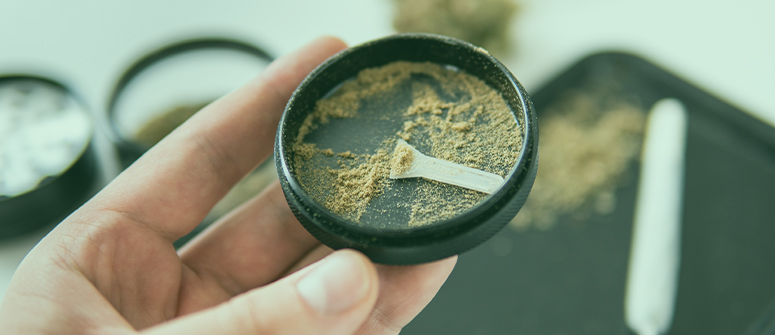
It really depends on the strain. For some fast-flowering strains, it could take as little as four weeks for new trichomes to make their way from clear, to milky, to amber. For plants that take much longer to flower, trichomes may appear and then remain predictably clear for many weeks before maturing and changing colour.
To make sure that you don’t miss the suitable time to harvest, you should regularly check your plant’s trichomes.
This is where the suggested flowering time on the packaging can be useful. If a plant has a 12-week flowering time, then you don’t need to start checking regularly after five weeks of flowering. Rather, start checking around 9 or 10 weeks, just in case your plant is early.
On the other hand, if your plant has a 7-week flowering time, then you’ll probably want to start having a look at around five weeks.
In both cases, you’ll probably be a little early, but it’s better to be safe than sorry—especially if you want weed that delivers a clear, energetic high.
How to check your cannabis trichomes
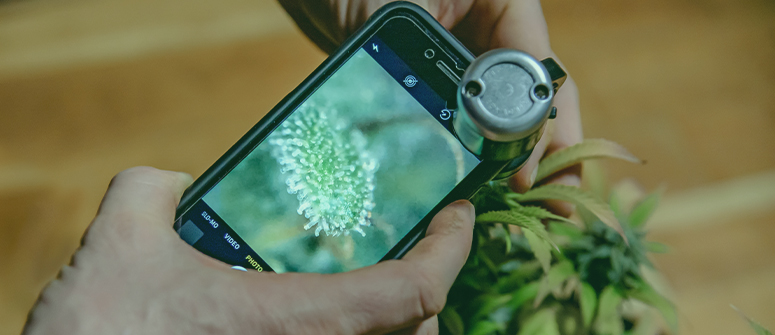
So, how do you check your plant’s trichomes for signs of maturity? As they’re so small, you can’t really tell with the naked eye whether they’re developed or not. Instead, you need some kind of magnifying device to help you get a better idea of what’s going on. So what can you use?
- Jeweller’s loupe: This is a go-to device for cannabis growers, and has long been used to check the progress of trichomes, and also to check for pests. These devices are designed to check the quality of precious gems, but they work perfectly for checking cannabis trichomes too. They are essentially small, pocket-sized microscopes that have a light inside that will illuminate whatever you’re looking at. If you like, you can even take photos through them.
- Microscopes: These can take the form of pocket microscopes, which are very similar to jeweller’s loupes, or they can be digital devices that you can hook up to your phone or computer to get a screen-sized view of what’s going on. If you’re really into growing and you want to get a good look at your plant and take some cool pictures, these digital microscopes can really help you get up close to your plants and see them on a whole new level.
- Macro lenses: You can either use a macro lens or setting on a digital camera, or use a macro attachment on a phone camera. Either way, these lenses act as microscopic additions to cameras and allow them to focus in great detail on a (despite the name) micro level.
None of these options are necessarily better or worse than the others, and they’re all quite affordable—so just go for whichever appears to suit you best. But we would recommend going for one of them, as getting an up close and detailed view of your trichomes is by far the best way to know when to harvest your weed and get the most out of your crop.
What happens to trichomes after harvest?
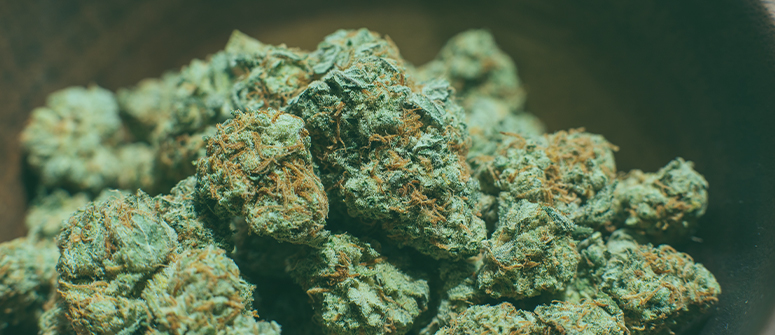
It is mainly light and heat that cause trichomes to mature and cannabinoids to change form. Therefore, trichomes can continue to change after harvest if they are exposed to light and heat. As most people don’t want them to change post-harvest, it’s important to keep trichomes cool and out of strong light once you’ve harvested them.
This is why cannabis is dried at mild temperatures of around 20ºC and kept in the dark throughout both drying and curing. If you tried to rapidly dry cannabis flowers at high temperatures, not only would they taste worse when you smoke them, but the trichomes would degrade and have unwanted (or no) effects.
Ideally, if you dry and cure weed properly, then trichomes should change very little after harvest. Indeed, a good drying and curing practice aims to maintain trichomes as they are.
Separating trichomes from cannabis
As trichomes contain everything necessary to get high, you can separate them from the cannabis plant to make concentrates. Perhaps the simplest and best-known cannabis concentrate is hashish. Hashish, or hash, is made by compressing kief. Kief is just the name given to a collection of detached trichomes. This kief can then be pressed into a block, making hash.
Other concentrates extract the trichomes using water or a solvent, such as butane. Depending on the extraction method, a different concentrate is created. What they all have in common is that a much larger percentage of their overall mass consists of cannabinoids and terpenes, with some boasting up to 90% THC. As such, concentrates are also considerably more potent than unprocessed cannabis flowers.
How to boost trichome production
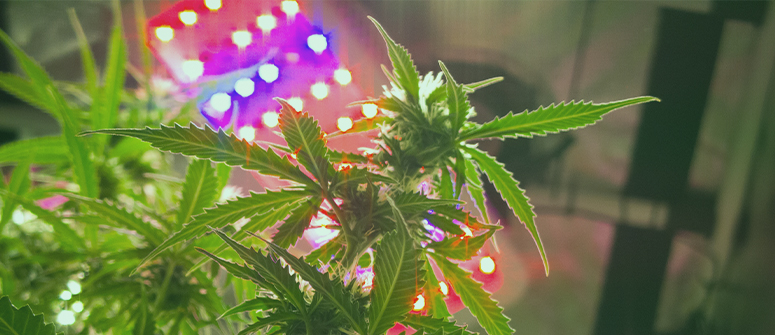
There are a few different ways to potentially increase trichome production, though exactly what effects each of the following methods have is unclear, except one: strain selection!
Indeed, certain cannabis cultivars simply produce more in the way of trichomes compared to others, and if you’re after as many trichomes as possible, the single best way to go about achieving this is to start with a plant that’s genetically predisposed to producing an abundance of them.
But once you’ve done that, what else can you do to increase the amount of trichomes on your weed?
Get some powerful lights! The more light plants are exposed to, especially UV light, the more trichomes they will produce. One method is to grow cannabis outdoors closer to the equator so it’s exposed to more direct sunlight. Assuming you don’t already live there, and don’t want to move in order to grow more resinous weed, then you can supplement strong indoor lights with UV lights. That being said, a genuinely good set of grow lights should suffice for good trichome production.
Cannabis trichomes: Vital structures
Trichomes are, arguably, the most important part of a cannabis plant (from a user’s perspective). Not only do they contain most (or even all) of the goodness that users want from their plants, but they even tell growers when the optimal moment to harvest is!
As such, understanding cannabis trichomes, how they work, and what their appearance means is crucial to becoming an experienced cultivator. The knowledge itself brings you closer to the plants and the practice of growing, and the application of this knowledge allows you to get the most from your endeavours!



